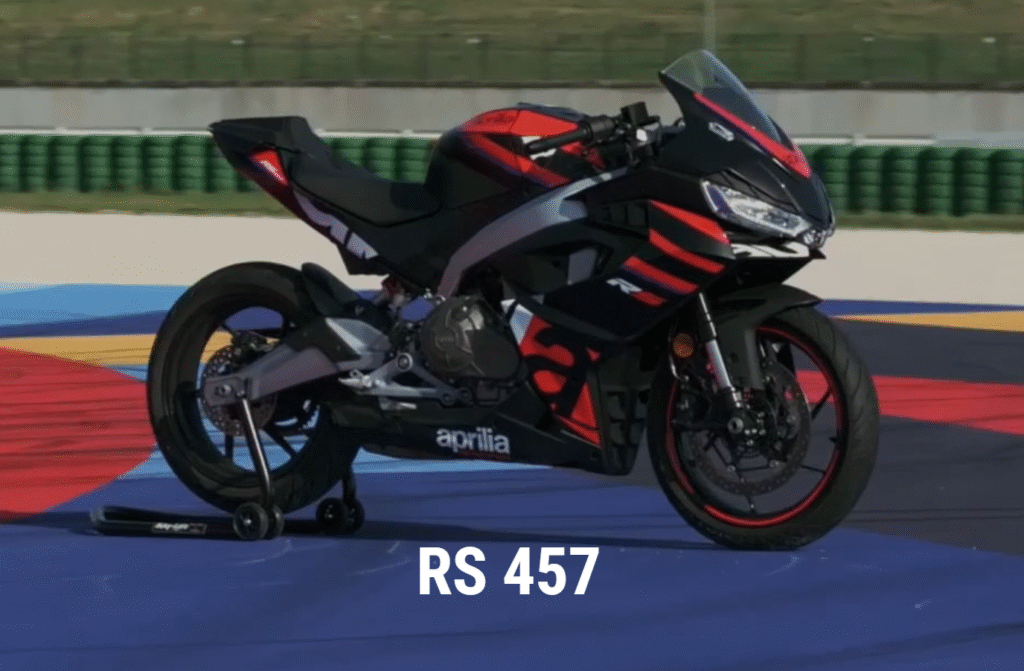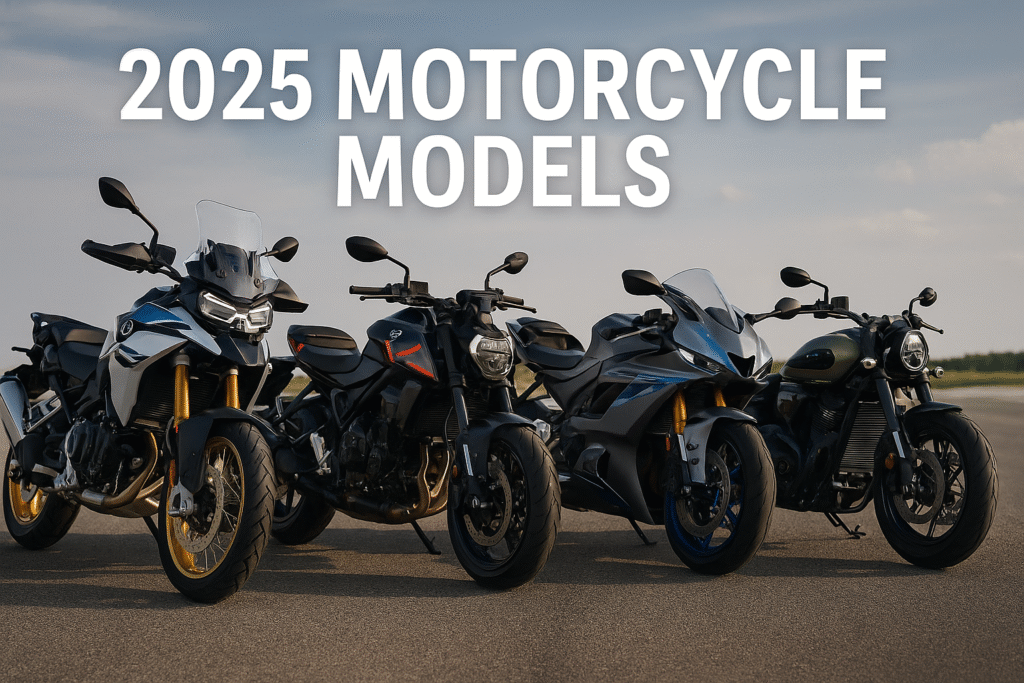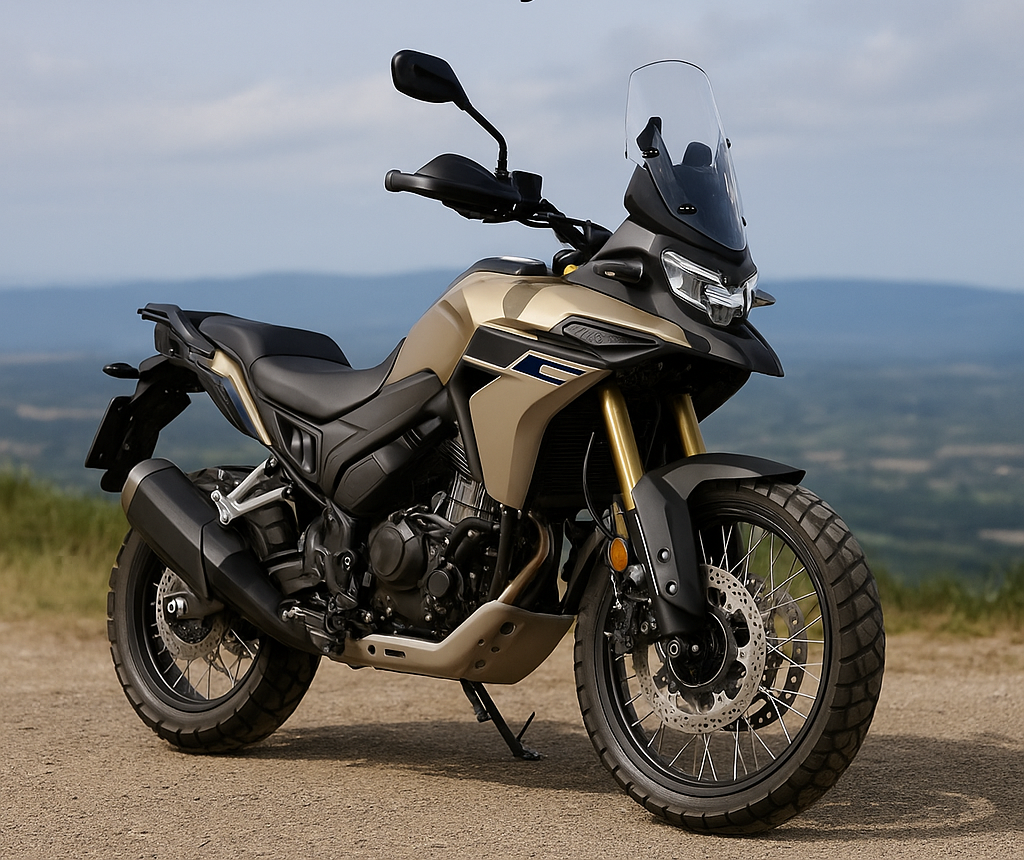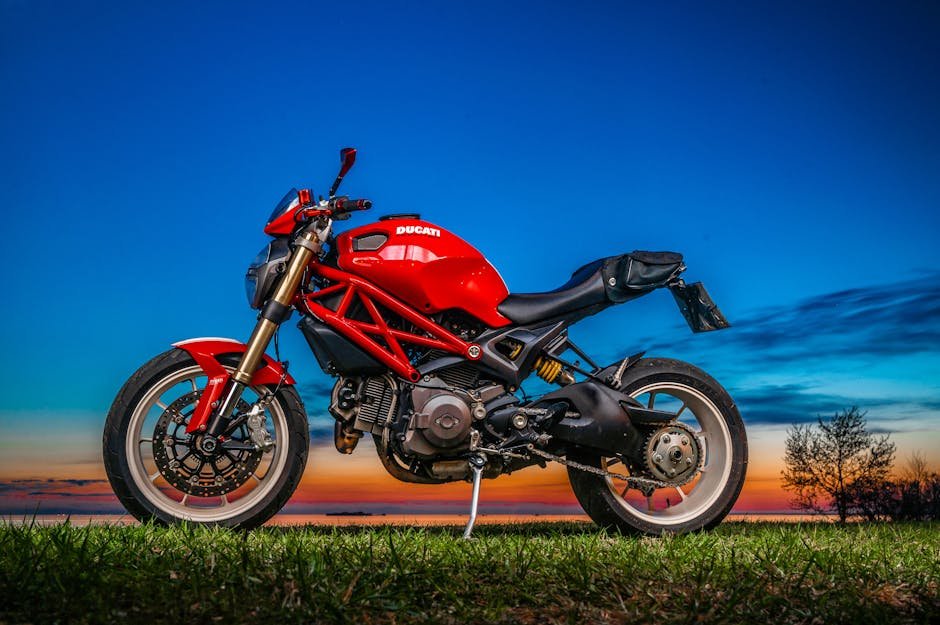Table of Contents
Aprilia is set to broaden its U.S. lineup in a big way – or rather, in a small, lightweight way – with the introduction of the Aprilia RS 457 to the American market in 2025. This is exciting news for sportbike enthusiasts and new riders alike. The RS 457 is a brand-new twin-cylinder sportbike that slots in below Aprilia’s acclaimed RS 660, and it’s designed to offer the style, technology, and racing spirit of the Italian brand in a more accessible package. After making waves in Europe as an A2-license compliant machine, the RS 457 is officially headed stateside, ready to take on the entry-level sportbike class dominated by the likes of Kawasaki’s Ninja 400 and Yamaha’s YZF-R3. Let’s dive into what makes the RS 457 special and why its arrival is a big deal.
Compact Engine with Racing DNA
At the heart of the Aprilia RS 457 is an all-new 457cc parallel-twin engine. Aprilia developed this engine from the ground up, and while it might have half the cylinders of the company’s V4 superbikes or the parallel twin of the RS 660, it carries that same racing DNA. The twin is liquid-cooled, DOHC, with four valves per cylinder, and revs eagerly to provide a blend of usable torque and top-end kick.
In European spec, the RS 457 produces about 47.6 horsepower (35 kW) to meet the maximum allowed for A2 license holders. That translates to roughly the high-40s in horsepower, which is right on par with the Ninja 400 and other bikes in the class. Torque is around 43 Nm (about 32 lb-ft), delivered at a relatively low 6,700 rpm, which should make the bike feel punchy in the midrange – useful for city riding and corner exits on twisty roads.
Numbers aside, what’s key is Aprilia’s experience from racing and higher classes has trickled down here. The engine features ride-by-wire throttle, enabling sophisticated fueling and the use of multiple engine maps (more on that later). It also comes with a slipper clutch as standard – a nice performance touch that prevents rear-wheel hop or chatter during aggressive downshifts, contributing to smoother corner entry if you’re riding hard on track or twisties.
The exhaust note, as reports from Europe have indicated, is quite charismatic for a small twin. Aprilia has tuned the exhaust and intake to give a satisfying growl at high revs and a smooth hum at cruising speeds. Don’t expect RSV4 levels of roar, of course, but by parallel-twin standards, it’s engaging and reminds you that you’re on an Italian machine with racing heritage.
Featherweight Chassis and Premium Components
One area where the RS 457 truly stands out in the entry sport category is its chassis design. Aprilia has graced the RS 457 with a full aluminum twin-spar frame, which is unique among its competition. Most bikes in this class (Ninja 400, R3, KTM RC 390, etc.) use steel tube frames to save cost. Aprilia instead used aluminum, resulting in a very lightweight yet rigid structure. The frame and swingarm (also aluminum) design is said to be inspired by the larger RS models, aiming for excellent stability and agility.
Thanks to this lightweight construction, the RS 457 tips the scales at just 159 kg dry, which comes out to about 175 kg (385 lbs) wet with fuel and fluids. That’s a very competitive weight – in the ballpark of the Ninja 400 (366 lbs wet) and lighter than Yamaha’s R3 (~375 lbs wet). Aprilia proudly boasts that the RS 457 has the best power-to-weight ratio in the class. Indeed, combining roughly 47 hp with 385 lbs means lively performance. Riders can expect the RS 457 to be quick off the line and responsive to every input, making it a joy in both city traffic and canyon roads.
Suspension on the RS 457 is also a step above the basics. Up front, there’s a 41 mm inverted fork with adjustable preload. Having a USD fork at this displacement isn’t unusual now, but preload adjustability is a welcome feature, allowing the rider to firm up or soften the front end to suit their weight or riding style. The rear shock is similarly preload-adjustable. While it’s not a fully adjustable racing suspension (no external damping adjustments on these), it’s more than sufficient for the target usage – and the settings from the factory have been praised for finding a good balance between comfort and sportiness.
Braking is another strong point: the RS 457 sports a single but sizable 320 mm front disc with a radially-mounted ByBre 4-piston caliper. ByBre is Brembo’s subsidiary focusing on smaller bike brakes, and their inclusion here indicates quality. A 320 mm rotor on a sub-400lb bike is plenty of stopping power, and with a radial caliper, riders should get good lever feel and strong bite when needed. The rear brake is a 220 mm disc with a ByBre twin-piston caliper for tidy support. Steel-braided brake lines come standard, which is fantastic – ensuring consistent brake feel even as things heat up, and again, a feature often missing on budget bikes.
Wheels are lightweight 17-inch alloy rims (3.00” front width, 4.50” rear), equipped from the factory with grippy tires. Aprilia hasn’t skimped here either – the bike comes with quality rubber that should offer confidence whether you’re commuting or leaning hard. Tire sizes are typical sporty sizes (likely 110/70-17 front and 150/60-17 rear), giving a good mix of agility and traction. Riders who want to take it to the track will find plenty of tire options in those sizes too.
Modern Tech: Ride Modes, Traction Control, and TFT Display
In terms of technology, the RS 457 is arguably best-in-class. Aprilia has endowed this little sportbike with a suite of electronics unheard of in entry-level machines until now. Front and center is the inclusion of three riding modes that adjust the engine’s power delivery and throttle response. This allows riders to select, for example, a mild mode for learning or rain conditions, and a full-power mode for maximum fun. The exact mode names haven’t been officially stated (they might be something like Commute, Dynamic, Race or simply level 1-2-3), but the idea is to make the bike adaptable to rider experience and conditions.
Additionally – and this is a big one – the RS 457 features multi-level traction control (Aprilia Traction Control). It’s adjustable and can even be turned off. Traction control on a ~47 hp bike might seem unnecessary to some, but it serves a couple of purposes. First, for absolute beginner riders, it’s an extra safety net if they accidentally get too eager with the throttle on a low-grip surface. Second, if you bring the RS 457 to a track day or if you encounter wet roads, the TC can prevent slides and spins, adding confidence. Aprilia’s experience with electronics in their larger bikes means the algorithms here are likely quite refined. The fact that you can turn it off also indicates it won’t be intrusive for more experienced riders who want full control.
Complementing the TC, the RS 457 is equipped with a dual-channel ABS system for the brakes, as required by regulations. But Aprilia has included an “anti-rollover” logic in the ABS – essentially meaning the ABS is tuned to mitigate rear wheel lift under hard braking (a mini “stoppie” control, if you will). Two ABS maps are mentioned, which could imply that in one of the ride modes (perhaps a track mode), the ABS is less intrusive on the rear or allows a bit of wheel lift, whereas in street modes it keeps things very stable. It might even allow you to disable ABS on the rear wheel when in a track/off-road setting, but since it’s a street sportbike, that’s probably not needed.
All these settings are easily accessible and visible through a vibrant 5-inch TFT color display. This display is surprisingly generous for a bike in this class – many competitors still have simpler LCDs or smaller screens. The RS 457’s TFT provides an array of info (speed, revs with a prominent bar tachometer, gear position, fuel, trip info, and the status of your electronics). The display likely has different themes or views, as seen on the RS 660, and possibly smartphone connectivity for basic notifications or an Aprilia app for telemetry. It’s also worth noting that the switchgear on the handlebars is backlit, another premium touch making it easy to adjust things during night rides and giving that high-end feel.
An optional (or in some markets, standard) extra that riders will love is the quickshifter. Aprilia has the hardware ready for an up/down quickshifter on the RS 457, which would allow clutchless gear changes both up and down through the 6-speed gearbox. While not confirmed as standard in the U.S. spec yet, this is typically offered as an add-on. Given how many riders customize their bikes, I suspect many RS 457 owners will opt for it – blitzing through the gears with a quickshifter just adds to the sportbike experience and Aprilia’s systems are generally excellent.
Sportbike Style and Ergonomics
Being part of the “RS” family, the 457 looks every bit a modern Aprilia sportbike. It carries styling cues from its bigger siblings – for instance, the triple LED headlight setup with the center light and LED running lights that mimic the RSV4/RS660 signature. The bodywork is sharp and aerodynamic, with winglet-like shapes in the fairing (though these are more aesthetic here than functional downforce generators). The paint schemes available in Europe included a classic Aprilia black/red livery and a bright acid gold option, similar to the RS 660’s colors, and a racing-replica style. We can expect similar vibrant options for the U.S., likely with a nod to Aprilia’s racing heritage.
Riders will find the ergonomics to be sporty yet not overly punishing. The RS 457 has clip-on style handlebars, but Aprilia has positioned them slightly above the triple clamp (not extremely low), which results in a moderately aggressive forward lean – enough to feel “in the bike” and ready for spirited riding, but not as extreme as a supersport 600 that can be brutal on the wrists. The seat height is 31.5 inches (800 mm), which is fairly approachable even for shorter riders, and the bike’s narrow waist (due to the parallel twin engine) means most riders will get feet down easily at stops.
The footpeg position is moderately rearset, giving plenty of cornering clearance. Combined with the lightweight and slim profile, the RS 457 should be very easy to handle for newer riders – whether in parking lots or flicking into corners. Aprilia likely paid a lot of attention to mass centralization and rider triangle to make sure this bike is confidence-inspiring. It’s a fine line to tread: too aggressive and you scare off beginners; too relaxed and you alienate the sport crowd. Early reviews from abroad say Aprilia nailed it, with the RS 457 being comfortable enough for daily use and weekend fun, yet capable on track when you tuck in behind the small windscreen.
That windscreen and fairing will provide some wind protection, making highway stints more bearable than on a naked bike, for example. While it’s not a touring machine, the fact you have a fairing means you could add a tank bag or small rear bag and do an overnight trip or a long ride without being completely battered by wind.
Competition and U.S. Pricing Expectations
Aprilia’s decision to bring the RS 457 to the U.S. shows they see a gap in the market for a premium small-displacement sportbike. Currently, riders in the U.S. who want a bike under 500cc have good choices, but mostly from Japanese makers and KTM. The Kawasaki Ninja 400 is a benchmark with its reliable twin-cylinder engine and friendly handling. Yamaha’s YZF-R3 is known for its high revving twin and rider-friendly nature. KTM offers the RC 390 with a single-cylinder punch and sharp handling. Honda has the CBR500R (471cc twin), but that bike is heavier and more of a sporty sport-tourer than a track-happy machine.
The Aprilia RS 457 enters this arena with several advantages:\n- It’s the most feature-rich, boasting electronics (modes, TC) that the others lack.\n- It likely has the highest power (on paper 47 hp; the Ninja 400 is around 45 hp, RC390 about 44 hp, R3 about 42 hp).\n- Its aluminum frame and overall spec make it arguably the closest to a “race-ready” machine in stock form among them.\n- And of course, the Italian design and brand cachet appeal – it’s a miniature exotic, whereas the others are more common sights.
Pricing hasn’t been officially announced for the U.S. as of writing, but we can make an educated guess. In Europe, the RS 457’s price is around €7,000. U.S. prices are often a bit lower when directly converted (and exclude VAT), so many expect the RS 457 will come in around $7,499 to $7,999 USD. That would position it above the Japanese bikes (the Ninja 400 and R3 are typically in the $5,500-$6,000 range) and around the KTM RC 390’s upper end (KTM’s are around $6,500). While that is indeed a premium, Aprilia is offering more tech and a more sophisticated chassis – so the value is there for those who appreciate the difference.
Aprilia might also include some extras in that price, like the quickshifter or better stock tires, to sweeten the deal. It’s worth noting that the RS 660, its bigger sibling, is priced around $11k and has been selling well; so a smaller bike around $7-8k might attract not only beginners but also experienced riders looking for a fun lightweight toy or track bike.
A New Era for Aprilia and New Riders
The arrival of the RS 457 in America is a sign of Aprilia’s commitment to bringing new riders into the fold. This bike serves as a perfect gateway to the Aprilia brand. Picture a younger rider or someone new to sportbikes: with the RS 457, they can enjoy a top-tier riding experience without jumping straight to a 100+ horsepower machine. They also get to experience Aprilia’s design and engineering philosophy early on – likely creating brand loyalty. In a few years, that rider might upgrade to an RS 660 or even an RSV4 as their skills and appetite grow.
For the U.S. market in general, it’s a positive development to see another player in the entry sport category, especially one with racing heritage. It spices up the competition and gives consumers more choice. If you love the idea of a small bike that’s as advanced as big bikes, the RS 457 is essentially in a class of one right now.
From a rider’s perspective, the RS 457 promises accessible performance. Its power is enough to be thrilling yet not overwhelming. Its handling is likely razor-sharp, making every corner an absolute delight. And because it’s lightweight and manageable, it won’t intimidate those who are still building confidence. With the electronics aids, it even allows a rider to gradually explore the bike’s limits – you could start with traction control on high and a mild mode, and as you improve, ramp up to the full power mode and minimal TC interference.
Existing Aprilia fans are also excited because it means Aprilia might even consider one-make race series or track events around this model. In some countries, manufacturers sponsor entry-level racing classes for bikes like these – imagine a spec series where a grid of RS 457s battle it out. That could eventually feed talent into higher classes and simultaneously prove the bike’s mettle.
Conclusion: Small Bike, Big Heart
The 2025 Aprilia RS 457 may be the “little sibling” of the RS family, but it arrives with a big statement: that you don’t need a liter engine to have an absolute blast on two wheels, and you don’t have to sacrifice technology or style just because you’re starting out. This lightweight twin-cylinder sportbike encapsulates Aprilia’s racing spirit, distilled into a user-friendly package.
For casual riders in the U.S., the RS 457 offers a thrilling yet confidence-inspiring ride. For the enthusiasts, it’s a track-capable featherweight that could remind you of the joy of a momentum bike – where skill and corner speed matter more than outright horsepower. And for Aprilia, it’s a strategic move to grow a new generation of riders who are passionate about the brand.
Takeaway: The Aprilia RS 457’s debut in America signals a fresh choice in the entry sportbike arena – one that combines Italian flair, advanced tech, and superbike-inspired engineering in a beginner-friendly format. Whether you’re a new rider eyeing your first sportbike or a seasoned rider looking for a fun machine to wring out on weekends, the RS 457 is poised to deliver big smiles in a small, sleek package. The lightweight sportbike game just got a lot more interesting on this side of the pond.




